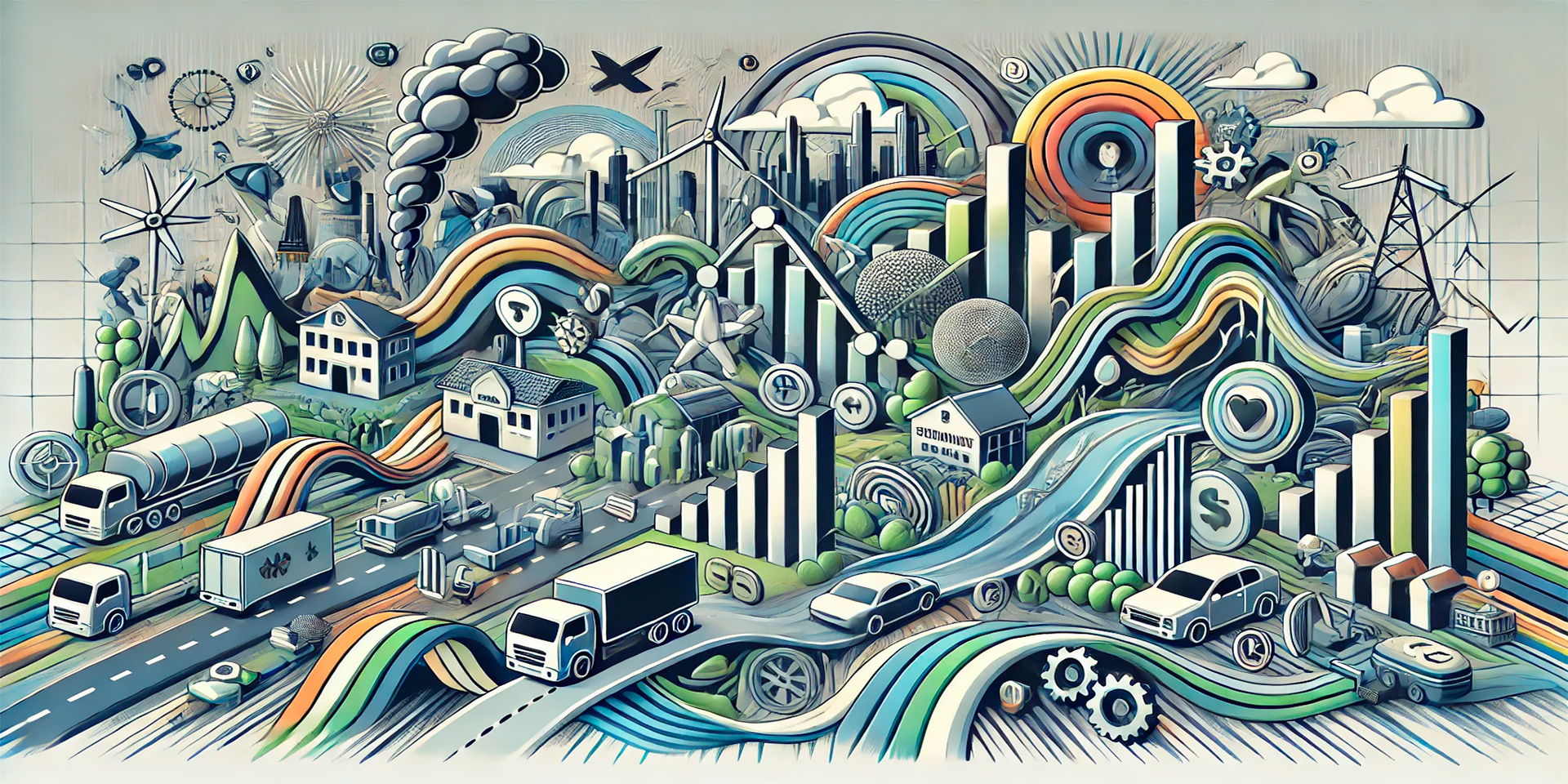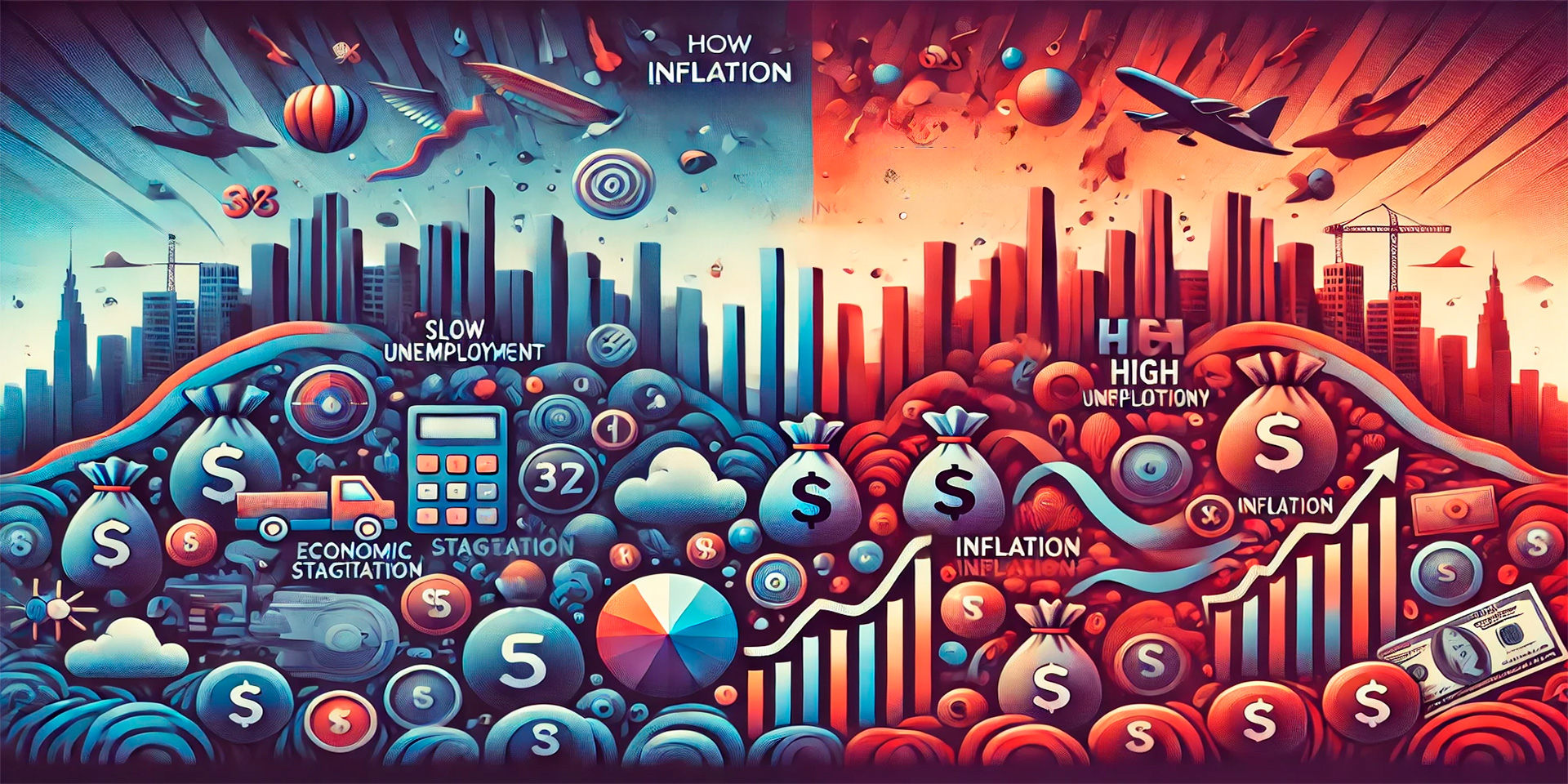Economic stagnation occurs when an economy experiences little to no growth over an extended period, often accompanied by high unemployment, weak consumer demand, and low business investment. One of the most effective ways governments can combat stagnation is through public spending and infrastructure projects. These efforts can help revitalize the economy by boosting demand, creating jobs, and stimulating investment. In this article, we will explore how public spending and infrastructure development can play a pivotal role in reversing stagnation and promoting long-term economic growth.
Understanding Economic Stagnation
Before diving into the role of public spending, it’s essential to understand the nature of economic stagnation. During periods of stagnation, economies struggle to generate growth, and GDP increases at a slow or negligible pace. This lack of growth leads to reduced business activity, high unemployment, and weak consumer confidence, resulting in a self-reinforcing cycle where low demand prevents investment, which further suppresses growth.
Economic stagnation can last for several years, posing serious challenges for governments, businesses, and individuals. In response, public spending on infrastructure projects has historically been one of the key strategies used to jumpstart economic activity and break the cycle of stagnation.
The Role of Public Spending in Fighting Stagnation
Public spending, particularly on large-scale infrastructure projects, provides an immediate injection of capital into the economy. This government-led investment can stimulate growth in several ways, from creating jobs to boosting demand for goods and services. By investing in essential infrastructure, governments can lay the foundation for long-term economic benefits while addressing immediate economic challenges.
Job Creation and Income Growth
One of the most direct benefits of public spending on infrastructure is job creation. Large infrastructure projects—such as building highways, bridges, airports, and public transit systems—require significant labor, providing employment opportunities for workers across various sectors, including construction, engineering, and project management. Additionally, these jobs often extend beyond the construction phase, with ongoing maintenance, operations, and related services generating sustained employment.
The income generated by these jobs leads to higher consumer spending, which in turn boosts demand for goods and services. When individuals earn more, they are likely to spend more on housing, food, transportation, and entertainment, creating a ripple effect throughout the economy that further stimulates growth. This increase in consumer demand can encourage businesses to invest in expansion, leading to further job creation and economic recovery.
Boosting Business Confidence and Investment
Stagnation often leads to a decline in business confidence, with companies hesitant to invest in new projects or expand operations due to uncertainty about future demand. Public spending on infrastructure projects can help reverse this trend by signaling that the government is committed to improving the economic landscape.
Infrastructure improvements create a more favorable environment for businesses by reducing operational costs and improving efficiency. For example, better transportation networks lower shipping costs, reduce travel times, and make it easier for companies to access new markets. Upgraded utilities and communication infrastructure, such as reliable energy grids and high-speed internet, enhance productivity and attract investment.
When businesses see governments investing in long-term infrastructure improvements, they are more likely to increase their own investments, whether that means expanding production, hiring new employees, or developing new products and services. This private-sector investment further supports economic recovery and helps lift the economy out of stagnation.

How Infrastructure Projects Stimulate Long-Term Growth
In addition to providing immediate economic benefits during times of stagnation, infrastructure projects play a critical role in supporting long-term economic growth. Well-designed infrastructure projects improve the overall efficiency and competitiveness of an economy, making it easier for businesses to operate and for individuals to access opportunities.
Improving Productivity
Productivity is a key driver of economic growth, and infrastructure development is essential for enhancing productivity across industries. Modern, efficient infrastructure reduces the time and resources needed to transport goods, move people, and deliver services. For example, improved transportation networks reduce congestion, enabling faster deliveries and lowering logistical costs for businesses. This increase in productivity translates into higher profits, which can then be reinvested into the economy.
Likewise, investments in technology infrastructure, such as expanding broadband internet access, enable businesses to operate more efficiently and access global markets. High-speed internet allows companies to adopt digital tools that improve communication, data management, and supply chain logistics, resulting in greater productivity and innovation.
Attracting Private Sector Investment
Robust infrastructure not only improves the day-to-day operations of businesses but also attracts private sector investment from both domestic and international firms. Companies are more likely to invest in regions with reliable infrastructure that supports their operational needs. This can lead to the development of new industries, innovation hubs, and increased foreign direct investment.
For example, a region with a modern port, well-maintained roads, and accessible airports is better positioned to become a global trade hub. Similarly, areas with advanced energy and technology infrastructure can attract industries such as technology, finance, and manufacturing, driving long-term economic development.
Enhancing Quality of Life and Economic Opportunities
Infrastructure projects do more than boost business activity—they also improve the quality of life for citizens. Investments in public transportation, clean water systems, and energy grids make it easier for people to access jobs, education, and healthcare, leading to improved social and economic outcomes.
For example, reliable public transportation allows workers to commute efficiently, reducing transportation costs and increasing access to job opportunities. Similarly, investments in green energy and environmental sustainability can create jobs in emerging sectors while addressing long-term challenges like climate change. These improvements not only enhance the quality of life but also support the development of a well-educated, healthy workforce that is critical for sustained economic growth.

Examples of Public Spending and Infrastructure Projects Fighting Stagnation
History has shown that public spending and infrastructure projects can be powerful tools in combating economic stagnation. Several notable examples demonstrate how governments have successfully used these strategies to stimulate economic growth during times of crisis.
The New Deal and Public Works During the Great Depression
One of the most famous examples of using public spending to combat economic stagnation occurred during the Great Depression in the 1930s. In response to widespread unemployment and economic collapse, U.S. President Franklin D. Roosevelt launched the New Deal, a series of public works programs designed to stimulate the economy.
The New Deal created millions of jobs through large-scale infrastructure projects, including the construction of roads, bridges, dams, and public buildings. These projects provided immediate employment and income to workers while improving the nation’s infrastructure. The economic impact of the New Deal helped lift the U.S. out of the Great Depression, setting the stage for decades of sustained growth.
Post-War Infrastructure in Europe: The Marshall Plan
After World War II, much of Europe was left in economic ruin, with damaged infrastructure and weakened economies. In response, the U.S. government implemented the Marshall Plan, a massive public spending program aimed at rebuilding Europe’s infrastructure and stabilizing its economies.
The Marshall Plan provided funding for the reconstruction of roads, factories, and utilities, which helped restart economic activity and laid the foundation for long-term growth. The program played a significant role in the post-war recovery of Western Europe, leading to the economic boom that followed in the 1950s and 1960s.
China’s Infrastructure Investment in Response to the 2008 Financial Crisis
In response to the global financial crisis of 2008, China launched a massive infrastructure stimulus package, investing heavily in transportation, energy, and telecommunications infrastructure. The Chinese government spent trillions of dollars on projects that included high-speed rail networks, highways, and renewable energy initiatives.
This investment not only helped China weather the global downturn but also positioned the country for rapid economic growth in the following years. China’s aggressive infrastructure spending boosted domestic demand, created jobs, and improved the country’s long-term productivity.
Challenges and Considerations for Public Spending and Infrastructure
While public spending and infrastructure projects are effective tools for fighting stagnation, they come with challenges and risks. It’s essential for governments to implement these strategies carefully to maximize benefits and avoid potential pitfalls.
Managing Public Debt
One of the primary challenges of using public spending to stimulate the economy is the potential for increased government debt. Large infrastructure projects require significant upfront investment, which often leads to higher borrowing. If not managed carefully, this can result in long-term fiscal imbalances and higher interest payments for governments.
To mitigate this risk, governments should focus on projects that provide long-term economic benefits and ensure that spending is sustainable. By prioritizing projects with a high return on investment, governments can stimulate growth while maintaining fiscal responsibility.
Ensuring Efficient Project Implementation
Another challenge is ensuring that infrastructure projects are completed efficiently and on time. Delays, cost overruns, and mismanagement can reduce the effectiveness of public spending and erode public trust in government initiatives. To avoid these issues, governments must implement strong project management practices, including transparent procurement processes, regular audits, and clear accountability mechanisms.
Addressing Environmental and Social Concerns
Infrastructure projects can have significant environmental and social impacts. For example, large construction projects may disrupt ecosystems, displace communities, or contribute to pollution. Governments must balance the economic benefits of infrastructure development with the need to protect the environment and ensure that projects benefit local communities.
By incorporating sustainable practices into infrastructure planning—such as green energy solutions, environmental impact assessments, and community engagement—governments can create infrastructure that supports both economic growth and environmental sustainability.


